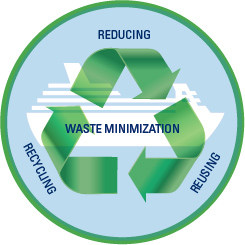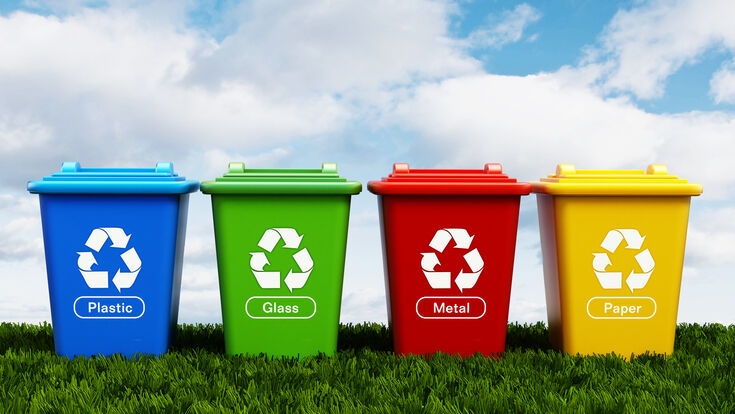Discovering Different Kinds Of Waste in Modern Waste Administration Equipment
The contemporary landscape of waste monitoring includes browsing an intricate selection of waste types, each requiring specialized handling and disposal approaches to minimize environmental influences. Local strong waste, dangerous waste, electronic waste, and natural waste each present distinctive challenges and opportunities for resource recuperation. Ingenious options such as wise waste bins and waste-to-energy technologies are emerging as important devices in improving effectiveness and sustainability. Recognizing these waste types is important for fostering public awareness and motivating active involvement in sustainable techniques. What approaches can effectively resolve these different kinds of waste while promoting a round economy?
Local Solid Waste
Municipal solid waste, often referred to as home garbage or trash, incorporates a range of disposed of products created by household, industrial, and institutional sources within a community. This waste stream usually consists of items such as product packaging, food scraps, lawn trimmings, paper, plastics, textiles, and disposed of family items. The management of local strong waste is a crucial component of metropolitan preparation and public wellness, necessitating efficient collection, transportation, and disposal systems.
Reliable waste management systems are created to reduce environmental influence while optimizing source recuperation. This often involves a combination of approaches including landfilling, composting, and recycling. Recycling programs target products like paper, glass, metals, and certain plastics, diverting them from land fills and reestablishing them into the production cycle. Composting organic waste, such as food scraps and yard trimmings, not only lowers landfill usage yet additionally generates useful dirt amendments.
Districts should likewise address the financial and logistical obstacles connected with waste administration. Carrying out pay-as-you-throw systems, boosting public recognition, and purchasing technology can considerably improve waste diversion prices. By integrating these methods, communities can promote sustainable areas, lower greenhouse gas exhausts, and conserve natural resources.
Contaminated Materials

Reliable dangerous waste administration involves numerous vital steps: recognition, partition, therapy, and disposal. Segregation makes certain that harmful products are saved independently from non-hazardous waste to prevent cross-contamination.
Regulative frameworks, such as the Resource Conservation and Healing Act (RCRA) in the USA, provide standards and criteria for harmful waste management. Adherence to these laws, coupled with advancements in waste therapy modern technologies, is vital in mitigating the threats connected with contaminated materials.
Digital Waste
Digital waste, typically referred to as e-waste, represents a quickly growing obstacle in waste monitoring systems worldwide. This sort of waste includes disposed of digital tools and tools such as smart devices, computer systems, televisions, and other digital home appliances. The quick speed of technological improvement, coupled with lowering item life expectancies and customer need for the most up to date devices, has exponentially raised the volume of e-waste produced each year.
E-waste is especially troublesome due to its complex structure, usually consisting of harmful substances like mercury, lead, and cadmium, which position considerable environmental and health and wellness risks otherwise correctly managed. Conversely, e-waste also includes important Bonuses products such as copper, silver, and gold, which can be recouped and reused. The double nature of e-waste-- both valuable and hazardous-- necessitates specific handling, recycling, and disposal processes.
Effective e-waste administration entails stringent regulatory structures, robust collection systems, and progressed recycling modern technologies. Public understanding and involvement are crucial, as inappropriate disposal recommended you read methods, such as illegal unloading and casual recycling, exacerbate environmental contamination and carcinogen. Improving e-waste administration practices is vital for mitigating environmental influence and recovering beneficial sources in an increasingly digital globe.

Organic Waste
Organic waste, comprising kitchen area scraps, backyard trimmings, and agricultural residues, stands for a considerable part of the worldwide waste stream. This sort of waste is eco-friendly, meaning it can be damaged down by microbes into less complex natural substances. In spite of its possibility for natural disintegration, improper monitoring of natural waste can bring about adverse environmental effects, consisting of the exhaust of greenhouse gases such as methane, which add to environment change.
Reliable monitoring of natural waste is important for minimizing these environmental influences (recycling lives services). Composting is a widely adopted method, transforming natural waste right into nutrient-rich compost that can enhance soil wellness and farming productivity. In addition, anaerobic food digestion is an arising modern technology that transforms natural waste right into biogas, a sustainable power resource, and digestate, which can be made use of as plant food
Municipalities and waste management entities should carry out robust organic waste collection and therapy programs to make best use of the benefits of these processes. Public education and learning projects can also play an essential function in motivating homes and companies to separate organic waste from other kinds of waste. By focusing on the administration of natural waste, societies can reduce garbage dump usage, reduced greenhouse gas emissions, and create important results for farming use.

Ingenious Waste Management
In the world of waste administration, cutting-edge techniques are changing just how societies handle their refuse, going for sustainability and efficiency. These improvements incorporate a variety of modern technologies and practices that improve recycling prices, minimize garbage dump dependence, and reduced environmental influence. One prominent technology is the application of wise waste bins equipped with sensors that keep an eye on fill levels and enhance collection paths. This not just reduces fuel intake yet click over here likewise decreases greenhouse gas emissions.
Another notable development is the adoption of waste-to-energy (WtE) innovations. By converting non-recyclable waste right into usable power through processes such as incineration and anaerobic food digestion, WtE reduces landfill burden and offers a renewable resource resource. Additionally, improvements in chemical recycling enable the failure of complicated plastics into their original monomers, allowing the creation of new, top quality plastic products.
Moreover, the round economy version is getting traction, stressing the style of items and systems that prioritize reusability and source efficiency. This alternative method urges industries to lessen waste generation from the beginning. Through these ingenious techniques, modern-day waste administration systems are not only attending to the immediate challenges of garbage disposal however also paving the means for a much more lasting future.
Final Thought
A detailed understanding of municipal strong waste, contaminated materials, digital waste, and organic waste, coupled with the implementation of ingenious waste administration remedies, is imperative for minimizing environmental impacts. Integrating innovations such as clever waste containers and waste-to-energy systems can boost performance and sustainability. Reliable waste management approaches not only foster resource recuperation yet additionally promote public recognition and participation, inevitably adding to the advancement of a circular economic climate.
The contemporary landscape of waste management involves navigating an intricate selection of waste kinds, each needing specialized handling and disposal methods to alleviate environmental effects. Metropolitan strong waste, unsafe waste, electronic waste, and natural waste each existing unique difficulties and chances for resource recovery.Digital waste, commonly referred to as e-waste, represents a swiftly growing difficulty in waste monitoring systems worldwide. Via these innovative methods, modern waste monitoring systems are not just addressing the prompt challenges of waste disposal however also paving the method for a more sustainable future.
A comprehensive understanding of metropolitan solid waste, dangerous waste, digital waste, and organic waste, paired with the execution of innovative waste administration solutions, is vital for alleviating ecological effects. (recycling lives services)